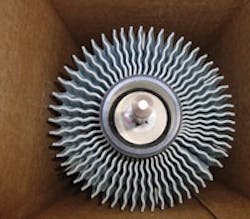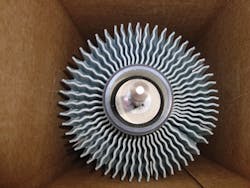Hydrogen Plant Cuts Fuel Consumption
The hydrogen plant of CPIngredientes, Guadalajara, Mexico, has a typical reformer configuration consisting of tubes of varying ages. The plant recharged several of these tubes with traditional ceramic catalyst as recently as January 2012.
"With an operational goal to reduce natural gas consumption in our burner and increase plant efficiency, we decided to replace all of the ceramic pellet catalyst media in the reformer with Catacel Corp.'s Stackable Structural Reactor (SSR), a foil-supported steam reforming catalyst," notes Javier Fortuna, principal of Total Energy, plant operations consultant to CPIngredientes.
WILLIAM WHITTENBERGER is president and chief technology officer of Catacel Corp., Garrettsville, Ohio. E-mail him at [email protected].



